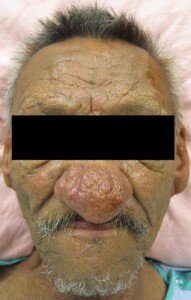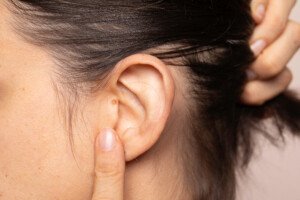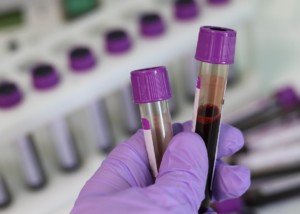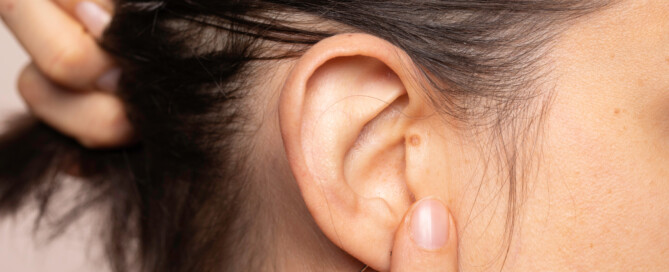Cervical Carcinoma in Situ vs. CIN 3: Is There a Difference?

The last thing a woman with abnormal cervical cells needs is confusion over what exactly she has: carcinoma in situ or CIN 3?
Is there a difference between CIN 3 and an actual malignancy?
“Yes. CIN 3 means the cells are looking abnormal under the microscope and without treatment may develop into cancer,” says Heather Bartos, MD, a board certified OBGYN, and chief of Obstetrics & Gynecology at Texas Health Presbyterian Hospital in Denton, TX.
“Cervical carcinoma in situ means that the cells are cancerous, and that they have not moved out of the location from where they originated.”
Carcinoma in Situ (stage 0)
The word “carcinoma” means cancer. So anything that has carcinoma in its name is malignant.
In situ means local or very confined, or in its original place.
So literally, carcinoma in situ is a cancer that’s still in its original place — and is at its most curable form.
What about CIN 3?
These are precancerous cells. They are not (yet) malignant, but as Dr. Bartos points out, can become malignant.
It’s considered the most severe form of CIN before cancer develops.
CIN 3 also involves a larger portion of the cervical lining being affected by the abnormal cells.
What is the “CIN” in CIN?
• It stands for cervical intraepithelial neoplasia.
• CIN may also be referred to as dysplasia, which means cellular overgrowth.
• CIN 3 or III is a high-grade dysplasia — higher than the more moderate grade of II, which is more progressed than the mild form of I.
 Dr. Bartos served as an assistant clinical professor of OBGYN at the Uniformed Services University of Health Sciences for several years and was a physician in the U.S. Navy for eight years.
Dr. Bartos served as an assistant clinical professor of OBGYN at the Uniformed Services University of Health Sciences for several years and was a physician in the U.S. Navy for eight years.
 Lorra Garrick has been covering medical, fitness and cybersecurity topics for many years, having written thousands of articles for print magazines and websites, including as a ghostwriter. She’s also a former ACE-certified personal trainer.
Lorra Garrick has been covering medical, fitness and cybersecurity topics for many years, having written thousands of articles for print magazines and websites, including as a ghostwriter. She’s also a former ACE-certified personal trainer.
.
Top image: Freepik
Cause of Jaw Muscle Twitching Can Be Teeth Cleaning

A twitching jaw muscle can have several causes and one of them is cleaning the teeth. (more…)
Can TMJ Disorder Cause Eye Socket Pain?

Eye socket pain can bring to mind a brain tumor or aneurysm, but temporomandibular joint disorder (“TMJ”) is also a possible cause for pain that seems to be originating from within the eye.
“Pain from TMJ disorders can be experienced in different part/s of the face and neck, and it is not uncommon for patients to experience isolated pain in regions of the eye or ears and no pain in the TM joint region (despite it being TMJ disorders),” says Brijesh Chandwani, DMD, BDS, Diplomate, American Board of Orofacial Pain, with Connecticut & NY TMJ.
“There are a few different mechanisms behind pain being experienced in the region of the eyes,” continues Dr. Chandwani.
“Inflammation in the TMJ region often causes pain in the face of the affected side of the jaw joint including the eye.
“In cases of non-inflammatory disorders of the TMJ (muscle spasm, muscle disorders), pain can be referred from the affected muscle to the eye socket.
“Thirdly, patients often suffer from TMJ disorders and different headache disorders concurrently, and eye socket pain could be the main symptom from the headache disorder.
“Pain in the region of the eye socket could also be referred from the neck muscles.
“Lastly, pain in the eye socket could be due to something scary like a brain tumor also.”
What you should do is see your regular doctor for an initial evaluation, though seeing a neurologist before any other kind of doctor can also set your mind at ease.
Your primary care physician may refer you to an ophthalmologist and/or neurologist, but is not likely to suspect TMJ disorder if your only symptom is eye socket pain and even other head discomfort with it.
If an MRI or CT scan of the head and neck shows no abnormalities (e.g., a pinched nerve in the neck can also cause pain that seems to be emanating from the eye socket), you’ll want to get an exam by your dentist.
Like Dr. Chandwani pointed out, TMJ disorder doesn’t always present with the more publicized problems of this common ailment such as a clicking jaw, inability to open the mouth all the way and discomfort chewing food.
“If you are suffering from eye socket pain, primary physician should be contacted right away,” says Dr. Chandwani.

Dr. Chandwani has 15+ years of experience focusing on TMJ disorders and sleep disorders.
 Lorra Garrick has been covering medical, fitness and cybersecurity topics for many years, having written thousands of articles for print magazines and websites, including as a ghostwriter. She’s also a former ACE-certified personal trainer.
Lorra Garrick has been covering medical, fitness and cybersecurity topics for many years, having written thousands of articles for print magazines and websites, including as a ghostwriter. She’s also a former ACE-certified personal trainer.
.
Top image: Freepik.com
Can a 17 Year Old Get Breast Cancer? Yes.
It’s fair to be point-blank: A girl of 17 years CAN get breast cancer. It has happened.
But there’s something that teen girls need to be very aware of when it comes to breast cancer. (more…)
Serious Diseases that a Blood Test Can Detect

There are numerous serious diseases that a blood test can detect.
Sometimes a blood test will only detect a disease marker, but others will outright reveal presence of the medical condition.
For example, there are blood tests that detect markers for cancer, but these are not diagnostic. They serve to guide a doctor in the next steps.
These include the PSA test for prostate cancer and the CA-125 test for ovarian cancer.
One interesting blood test is called the D-dimer. It’s given to people who present with symptoms suspicious for a pulmonary embolism (a blood clot that has traveled to the lungs).
However, a positive D-dimer result doesn’t always mean a blood clot. The result is often positive in elderly people simply because they are old.
The younger a person is who has a positive D-dimer, the more likely it WILL mean a blood clot somewhere in the body.
“Blood tests can be done for a variety of reasons,” says Walter Gaman, MD, FABFM, board certified in family medicine and the author of several award-winning books including “Age to Perfection: How to Thrive to 100, Happy, Healthy, and Wise.”
“They can shed a good amount of information about a person’s health or disease state, but they are not always definitive.
“For example, a complete blood count may reveal that a patient’s white count is elevated, a sign of infection, but it does not tell the doctor what type of infection.
“On the contrary, a blood test that is more specific, like tests for hepatitis, may tell the doctor if the patient has been exposed previous or if they have a current infection.
Blood tests are often given when the following conditions are suspected:
• Anemia
• Celiac disease
• Heart attack (though other conditions can cause elevated troponin such as rhabdomyalysis, but in patients presenting to the ER with chest pain, shortness of breath, nausea, sweating, etc., the troponin test is used to diagnose or rule out heart attack.)
• Genetic disorders (e.g., Angelman syndrome, Prader-Willi syndrome, Down syndrome)
• Leukemia
• Liver disease
• Pancreatic disease
• Systemic infection
• Thyroid disorder
What about prediabetes and diabetes?
“Sometimes, blood tests reveal a small amount of information or a sign that something may be wrong, but don’t give the bigger picture or enough for diagnosis,” says Dr. Gaman.
“This is often seen in a glucose or blood sugar level. The blood sugar may be elevated, but it is a test designed to only look at the level at that given time.
“The doctor will then order another test, usually a hemoglobin A1C to see the trend of blood sugar over the period of three months.
“Depending on the results, the patient may have no risk of diabetes, prediabetes or be fully diabetic.”
Just how many blood tests for disease exist?
“There are hundreds, if not thousands, of blood tests,” says Dr. Gaman. “Most patients assume that if a doctor has taken blood and everything is fine, they are completely healthy.
“This is a common misconception. The blood is collected with certain tests in mind. Blood is not ‘routinely’ tested for more than the basics.
“The basics usually include blood count and chemistry panels that look at glucose, liver enzymes and electrolytes.
“Things like HIV, cancer markers, heart disease or other tests may not be checked unless specifically requested.
“It’s best to communicate with your healthcare provider and ask questions about what tests were ordered and why.”
Blood Test for Concussion Is Very Accurate
Though not 100 percent definitive, the Banyan brain trauma indictor blood test in February 2018 was approved by the FDA.
This measures proteins that are released from an injured brain within 12 hours of trauma.
It’s 97.5 percent accurate for detecting concussions and 99.6 percent accurate for ruling out concussions.

Dr. Gaman is with Executive Medicine of Texas and is with the Staying Young Radio Show 2.0 podcast.
 Lorra Garrick has been covering medical, fitness and cybersecurity topics for many years, having written thousands of articles for print magazines and websites, including as a ghostwriter. She’s also a former ACE-certified personal trainer.
Lorra Garrick has been covering medical, fitness and cybersecurity topics for many years, having written thousands of articles for print magazines and websites, including as a ghostwriter. She’s also a former ACE-certified personal trainer.
.
Top image: Shutterstock/Olena Yakobchuk
Sources
healthtestingcenters.com/what-blood-tests-are-used-diagnose-cancer/
healthgrades.com/conditions/10-surprising-things-you-can-detect-with-a-blood-test
mayoclinic.org/diseases-conditions/heart-disease/in-depth/heart-disease/art-20049357
Does the Farmer’s Walk Give You Cold Shivers?

Why is it that every time you do farmer walks, you get a slightly chilly or cold feeling in your body and even shiver a little?
This almost always happens when I do farmer walks. (more…)
Floppy Upper Eyelids that Feel Rubbery: What’s the Cause?

One suspected cause of floppy upper eyelids that feel rubbery is one of the most misdiagnosed and under-diagnosed diseases. (more…)
What is Rhinophyma and Its Link to Skin Cancer

Skin cancer can be lurking within rhinophyma, hidden from plain view, but also, the margins of the cancer are obscured once it is discovered. (more…)
Cause of Chronic Tinnitus Suddenly Getting Worse










































































